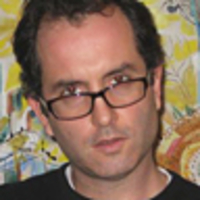
When I visited Hayvenhurst in 2001, even eight years before his death, the house seemed haunted by Michael Jackson. Rolling through the iron gates, I passed the unoccupied guard station, which had cobwebs on it, and the video monitors were all off. In the driveway was a collection of fancy cars that seemed to have been bought at least a decade before—a big-engined BMW sat under a blanket with logs on top. The fountain in the front yard was dry and choked with dead leaves. Behind the Disney-like façade of a faux candy store nearby, all the goodie-jars were empty, the ice cream sundae bar dusty.
Two years of renovations brought to Hayvenhurst a Japanese koi pond, a movie theater, and a six foot-tall Snow White and the Seven Dwarfs diorama.
The only Jackson—the only person, actually—there that day was Jermaine, who showed me around the much-in-need-of-upkeep-proto Neverland. Joe, the family patriarch, hadn’t lived there since 1994’s Northridge earthquake; the old man was so petrified of dying in “the big one” that he had decamped for Vegas. Michael had moved to Neverland Ranch—a two-hour drive to the west—in 1988, the year he turned 30. His father only learned that Michael was leaving when he saw a report about it on Entertainment Tonight. This was typical Jackson family communication, which only got worse after Michael left this house.
Hayvenhurst, as the mock-Tudor spread in Encino is known, was the first home of the superstar solo artist Michael Jackson of our imagination. It’s where he lived when his two true masterpieces, Off the Wall and Thriller, were released. The interview for his first Rolling Stone cover was conducted there; he recuperated from his first nose job there. Until he got too ornery, Bubbles the Chimpanzee resided at Hayvenhurst, as did the entire Jackson family. Joe had bought the place in 1971, but Joe being Joe, he made some lousy investments. In a sign of a family dynamic that would repeat itself constantly in Michael’s life, the successful son bailed out the old man—and bought him out of the house. Only then, in the early '80s, was the true Michael Jackson aesthetic revealed: Two years of renovations brought to Hayvenhurst a Japanese koi pond, a movie theater, and a six foot-tall Snow White and the Seven Dwarfs diorama.
I had flown out there to find out whether Jermaine would be showing up for Michael’s upcoming 30th Anniversary Celebration: The Solo Years at Madison Square Garden. Hayvenhurst was now Jermaine’s place, even though his brother’s name was on the deed. Since it was Michael who was usually canceling shows at the last minute, and scotching plans for reunions with his brothers, it seemed fitting that Jermaine, the original singer of the Jackson Five, and the second-most-talented Jackson brother, was finally getting to exert some muscle and put the planned Jackson Five onstage reunion in doubt. “The show is going forward without me,” Jermaine declared. He and youngest brother Randy had put out a press release saying that they weren’t coming. Jermaine and Randy had been battling with show promoter David Gest over money: The highest ticket prices were going for $5,000, but the brothers were being offered a mere $1,200 each to perform. Jermaine seemed so hurt, and he kept telling me that the problem could be resolved if only he could talk to Michael instead of Gest. But he seemed not to have the slightest idea of how he could even get in touch with his own brother, who, in the old days, used to share hotel beds with him on the road.
The most heart-wrenching thing I remember was Jermaine’s jeans. They were too acid-washed to be stylish. He had personally painted on them, with a childlike loopy scrawl in neon-colored rubber puff-pen, the titles of all of Michael’s biggest hits—"Thriller," "Billie Jean," "Bad." He said that he’d lost 30 pounds running around Balboa Park and drinking Jamba Juices to prepare for the big reunion; he’d bought a brand-new purple-and-silver bass for the gig. And despite this, he had no harsh words for his brother. “Michael is the most loving person,” he told me. “If you want something, he’ll give it to you. Busloads go out to the ranch all the time. If someone is dying and their last wish is to meet him, they’ll go. I try to get my kids out there, but we can’t get out there because it’s booked for underprivileged this and that. That’s what he built it for.”
In the end, Jermaine got what he needed to show up. On the stage of Madison Square Garden, Michael stood in front of his brothers, all of whom looked older, a little chunkier, but the same black guys they were years before as a band. Michael, in his silver sequined jacket, however, looked like a frail old white woman dressed up for a fancy luncheon. One of the saddest, most beautiful things I’d ever seen was when the beat of “I Want You Back” started pumping, and those brothers—Michael too—launched into their original Motown choreography, all those dips and bows and hand rolls in unison. At least on stage, the brothers were still so tight.
Andrew Goldman, a contributing editor at Elle and New York magazine, lives in Brooklyn with his family.






